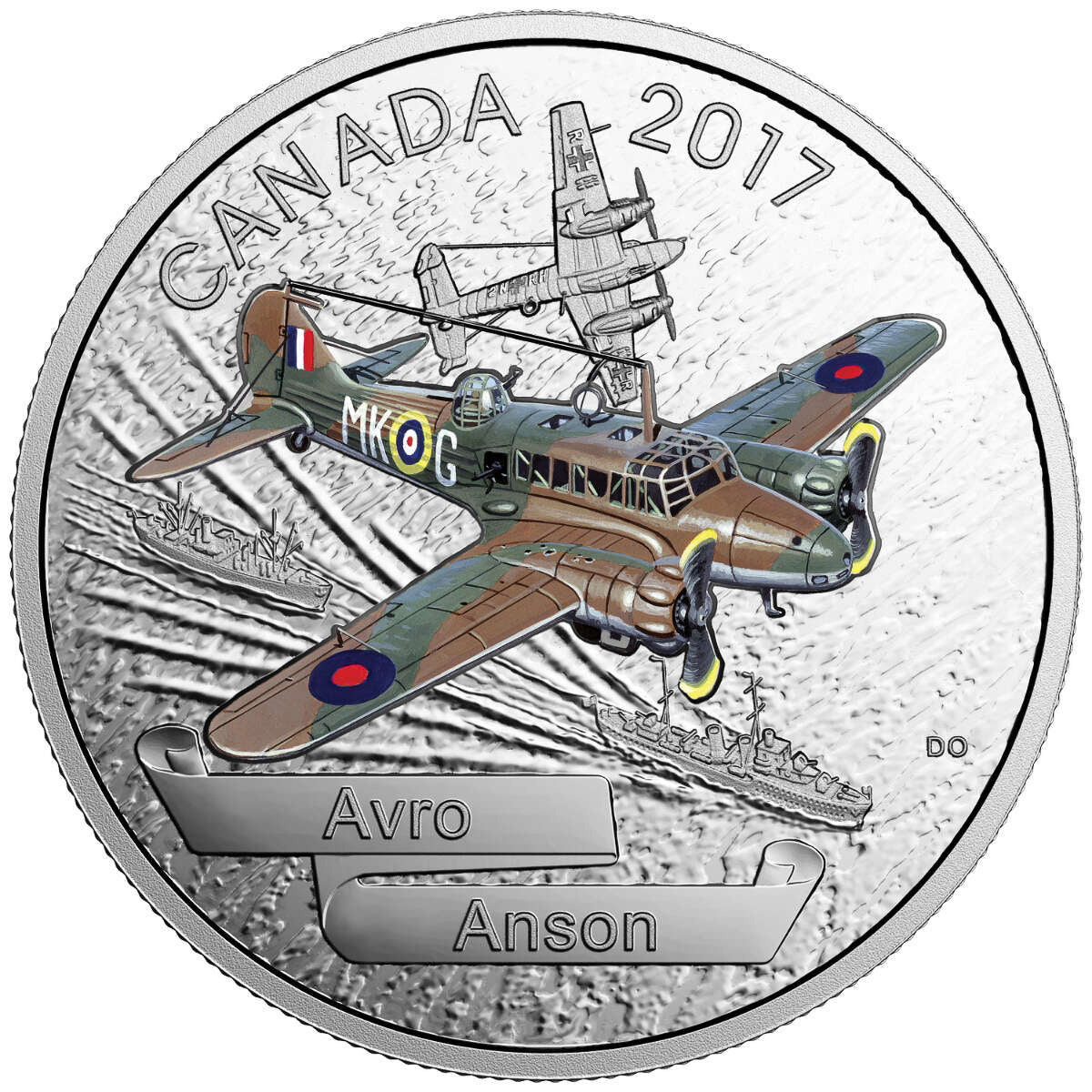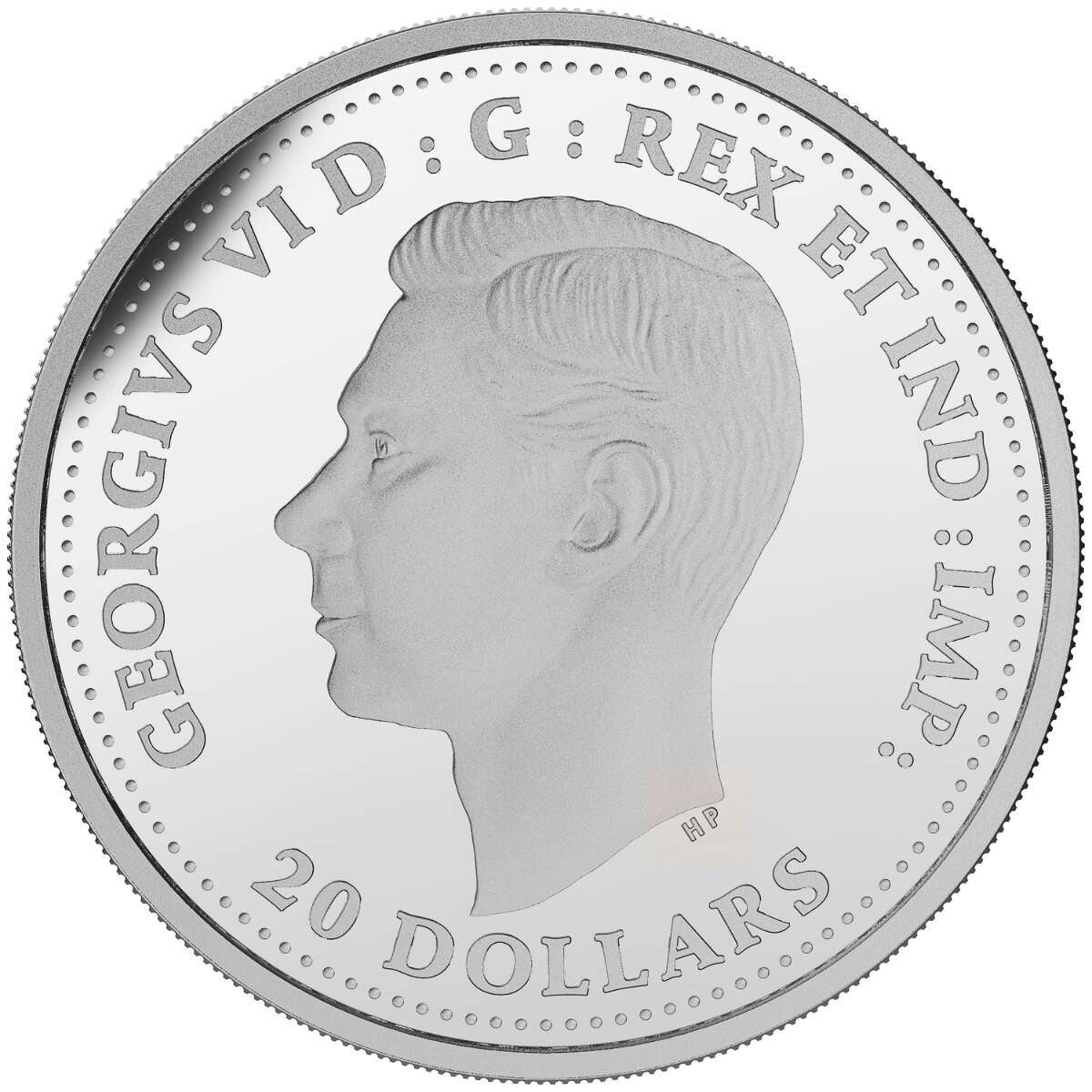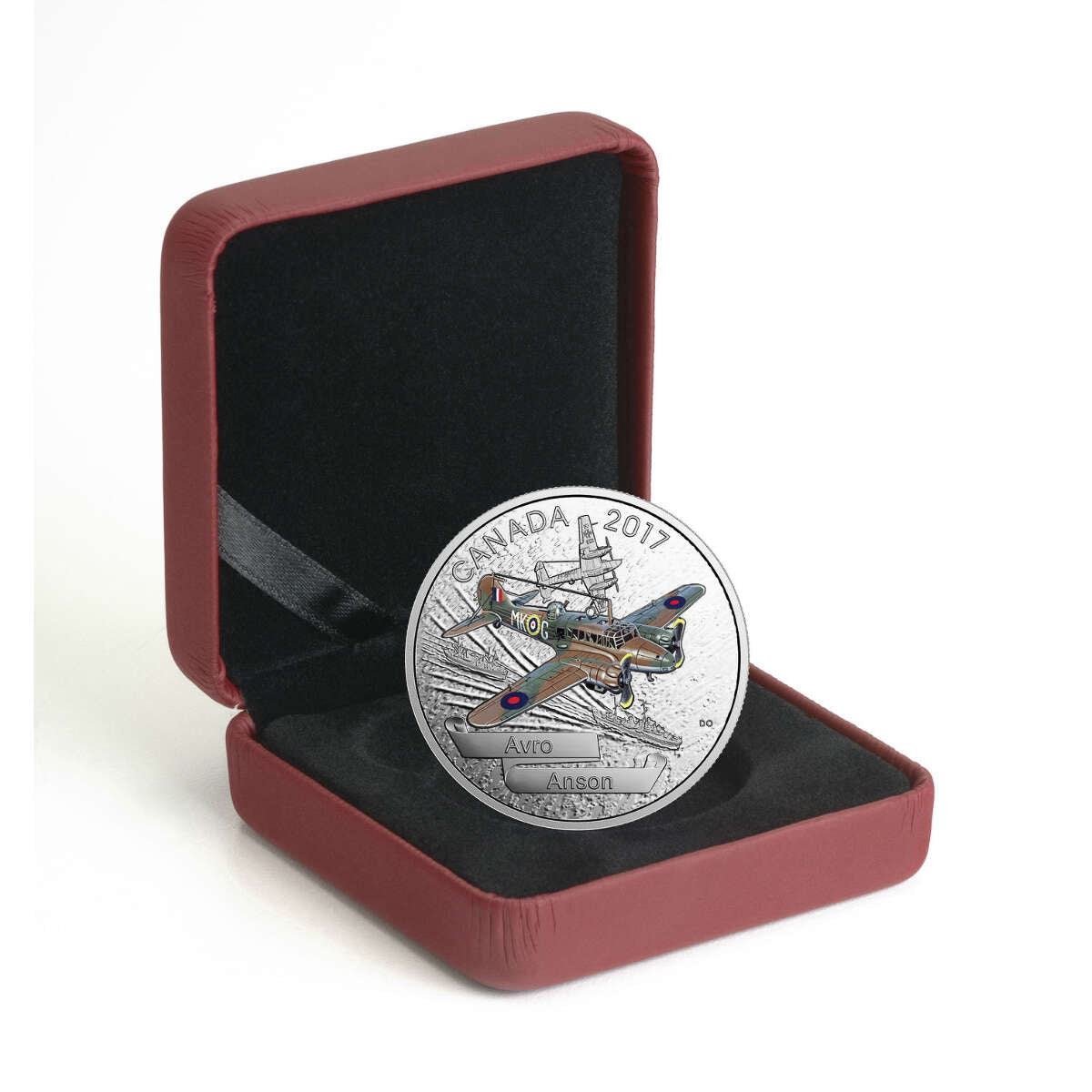Description
This 2017 $20 fine silver coin is the second coin of three in the Aircraft of the Second World War Series. The coin artistically creates a striking contrast using a near flawless proof finish and selective colour. The coin pays tribute to the Avro Anson, its wartime production fuelled Canada’s aircraft manufacturing industry, but its most significant role was arguably as the twin-engine aircraft of the British Commonwealth Air Training Plan (BCATP). This fine silver coin honours the versatile Anson for its many contributions to the Allied cause during the Second World War. The coin weighs just over one ounce of pure silver, and has a limited mintage of 7,500 coins. As a pure silver coin struck by the Royal Canadian Mint, this item is HST/GST exempt.
The Design:
The reverse design by Canadian artist David A. Oram features an engraved depiction of an Avro Anson in one of its many roles during the war. The legendary aircraft is brought to life once more by an outstanding amount of detailed engraving, all skillfully enhanced by the use of multiple finishes that convey the intensity of the situation as it flies over a convoy of ships at sea. Selective colour recreates the dark green and brown camouflage colours of the Anson, whose gun remains trained on the Messerschmitt BF 110 in the background. The obverse features the effigy of King George VI by T.H. Paget.
The coin is engraved with the word "CANADA," the date "2017" and the words "Avro Anson". The back design features an effigy of King George VI, by T. H. Paget, as used on Canadian coins in the Second World War period.
Avro Anson:
The Avro Anson entered service with RAF Coastal Command as a maritime reconnaissance aircraft in 1936. On retirement from front line service in 1939, the Anson really came into its own with the British Commonwealth Air Training Plan (BCATP), as an aircrew trainer. Due to wartime steel shortage, a molded plywood aircraft - the “Vidal Anson” was developed in 1941 and the first production Anson Mk. V flew from Cartierville, Quebec in January 1943. The Anson Mk. V trained British Commonwealth Air Training Plan aircrew in bombing, aerial photography and radio operation, but its main role was in navigation training. Anson’s continued in military service for quite a time after the end of World War II, then were retired in 1954 from the RCAF, but continued flying with the RAF until 1968. When manufacturing of the Anson ceased in 1952, over 11,000 had been built, with nearly 3,000 of them in Canada.





